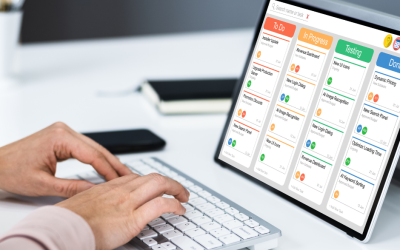Introduction
The future of standardized testing is being reshaped by artificial intelligence (AI). Traditional testing methods are evolving, with AI introducing more efficient, accurate, and personalized assessment techniques. This article explores how AI is transforming standardized testing and what it means for the future of education.
Enhancing Test Design
AI has the potential to revolutionize test design by creating more adaptive and fair assessments. Traditional standardized tests often fail to accommodate the diverse needs of students. AI can address this by developing adaptive tests that adjust difficulty based on individual performance.
Case Study: Adaptive Testing
Adaptive testing uses AI algorithms to tailor questions to a student’s ability level. For example, the GRE and GMAT exams employ adaptive testing to provide a more accurate measure of a student’s capabilities. This method ensures that students are neither overburdened by excessively difficult questions nor bored by overly simple ones, leading to a more equitable testing experience.
Improving Accessibility
AI can significantly improve the accessibility of standardized tests for students with disabilities. Traditional tests often require special accommodations that can be cumbersome to implement. AI-driven tools can provide real-time adjustments and support, making standardized tests more inclusive.
Case Study: AI-Powered Assistive Technologies
AI-powered assistive technologies, such as speech-to-text and text-to-speech tools, can help students with disabilities navigate standardized tests more effectively. These technologies ensure that all students have equal opportunities to demonstrate their knowledge, regardless of their physical or cognitive abilities.
Ensuring Fairness and Reducing Bias
One of the major criticisms of standardized testing is its inherent bias, which can disadvantage certain groups of students. AI can help mitigate this issue by analyzing test questions for bias and ensuring that they are fair and inclusive.
Case Study: Bias Detection Algorithms
AI algorithms can be used to detect and eliminate biased questions from standardized tests. These algorithms analyze historical data to identify patterns of bias and suggest modifications to create a more equitable assessment. By implementing bias detection algorithms, testing organizations can ensure that their exams are fair for all students.
Streamlining Grading and Feedback
Grading standardized tests is often a time-consuming and error-prone process. AI can streamline grading by providing accurate and efficient evaluation of student responses. This allows for quicker feedback, enabling students to understand their performance and areas for improvement.
Case Study: Automated Essay Scoring
Automated essay scoring systems use AI to evaluate written responses. These systems can assess grammar, coherence, and content, providing a score that aligns closely with human grading. Tools like free essay makers for students utilize automated scoring to deliver rapid and reliable feedback, helping students and educators alike.
Conclusion
AI is poised to transform the future of standardized testing in numerous ways. From enhancing test design and improving accessibility to ensuring fairness and streamlining grading, AI offers a range of benefits that can make standardized testing more effective and equitable. As AI continues to evolve, its integration into standardized testing will likely lead to more personalized, fair, and inclusive assessments, ultimately benefiting students and educators alike. By embracing AI technologies, the education system can create a more adaptive and supportive environment for all learners.





